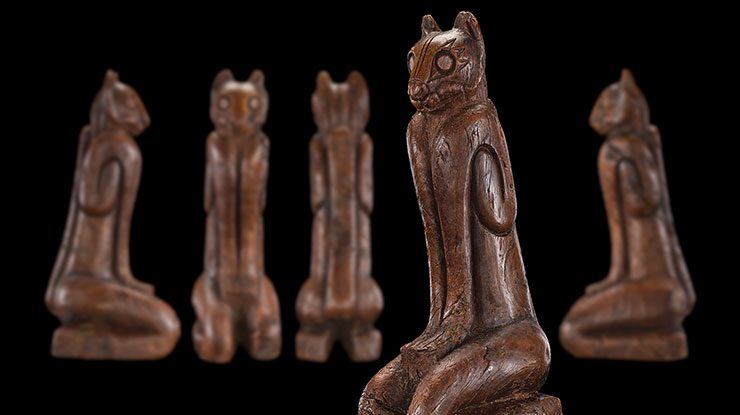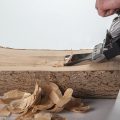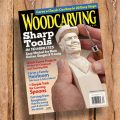Carve Your Own Key Marco Cat
By Jon Deck
(Read up on the story of the Key Marco Cat in our spring 2020 issue, available now!)
Purchase the IssueWhen I first saw the image of the Key Marco Cat, I wanted to carve it. For me, the artifact holds the same fascination as other antiquities from lost civilizations—classic symmetry, sleek stylized lines, and a reverence for the subject. A few months before, I had power carved a modern stylized cat when our staff was gifted with a cache of wood rescued from a three-century slumber in the bayous of Louisiana (see WCI88, Fall 2019). I knew that this wood and the Key Marco Cat had a date with destiny.
Sinker wood is dense, heavy, and rather hard, and does not carve well with edged tools. But because of its submerged past, I was sure that it would present a formidable health risk if power carved. I was careful to use a good filtration mask and a pickup hose from my dust collector while working the project.
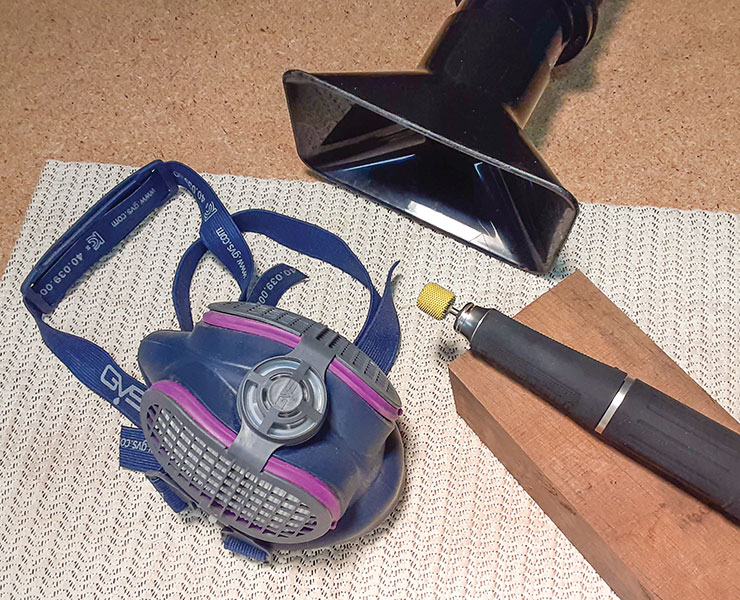
Take precautions to prevent breathing in wood dust.
I compound cut the figure on a band saw with a ¼” (6mm) blade, using both the saw’s dust collection port and the pickup hose on the saw table.
I had a good selection of rotary burrs and bits on hand, and started to separate the large features with a heavy-toothed cylinder. I carved down both sides of the back to establish the tail, rounded out the legs, and narrowed the neck down to the shoulders.
Frankly, there’s not just one way to carve the Cat; I found myself changing bits often to suit the feature I was defining, and you can do the same relative to the burrs you have on hand.
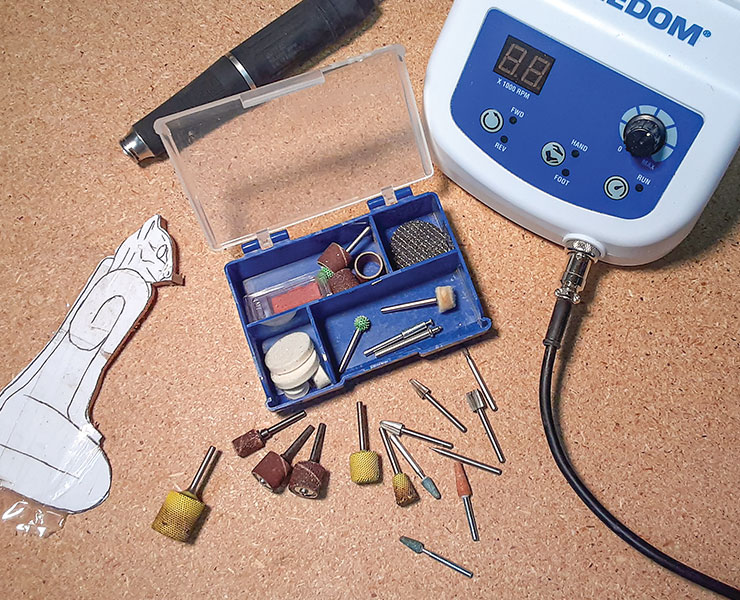
Use a variety of rotary bits and burrs to form the many contours of the carving.
For more distinct features like the arms, creases in the legs, and areas where the tail and back meet, I used a small carving cylinder. I followed that with a small cone-shaped stone to deepen and smooth the recesses. I used the finest bits for details—the grooves on the paws, the artistic markings on the head, and the facial features. I used sanding drums to smooth the surface and remove any remaining carving marks. (I tried hand sanding, but the wood proved too hard for it to be effective.)
I also tried to cut the eyes with edged tools, but as expected, the cuts only made fragile fissures that lead to unwanted chipping—a disadvantage to carving sinker wood. But the clear advantage became evident the more I worked the carving. The grain structure and natural flaws imparted a texture that recalled the original. A coat of paste wax added depth to the color and a pleasing soft sheen to the project.
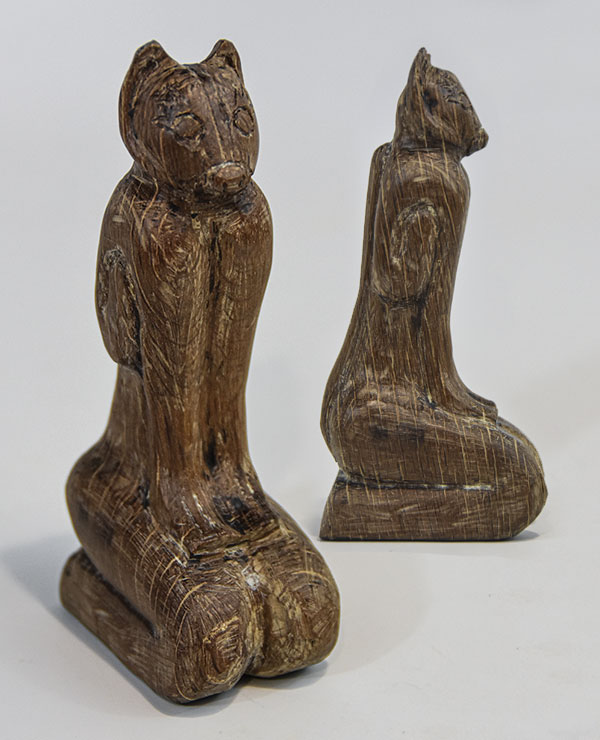
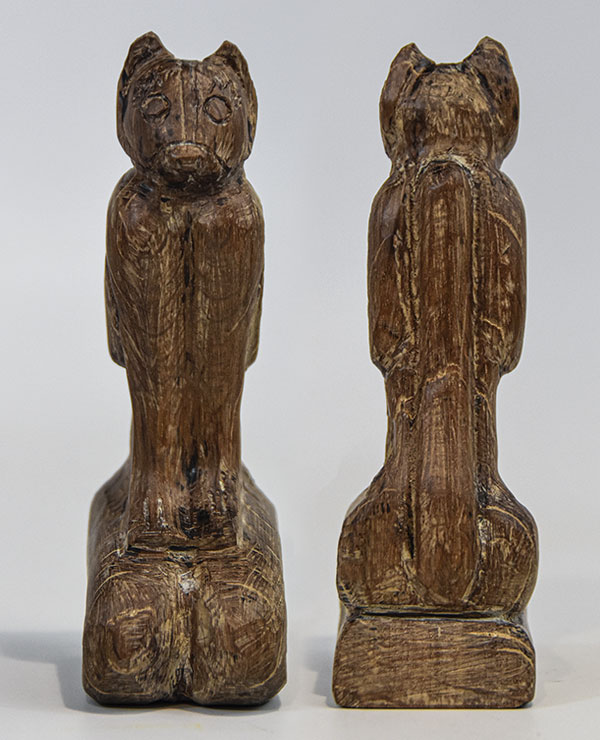
My power carved version of the Key Marco Cat.
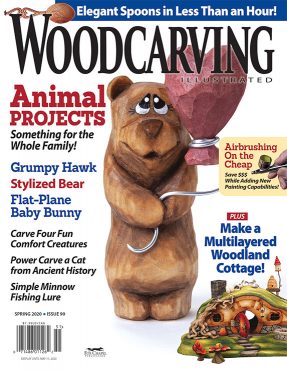 |
Get the Spring 2020 Issue Purchase the IssueFor more articles like this, subscribe to Woodcarving Illustrated magazine. Magazine SubscriptionPlus! Get digital mini magazines in your e-mail between printed issues.
|


